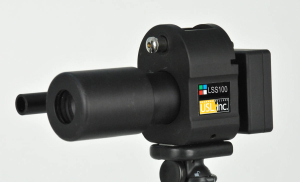After a decade of hopes and promises, several large theater chains, entire countries like Australia and major studios have broken the technology and chicken-and-egg barriers to implementing complete access for this part of society who have asserted their right to be included. That the digital caption and listening technology caught up in a flurry in the last year is no coincidence to these moves, but it has taken a lot of work and rigorous testing “plug fests” for years to get to this point.
Regal Cinemas has thrown the latest and greatest gauntlet – all screenings, in all their auditoriums, will be “Accessible” by the end of the year.
There are more than a few challenges ahead for them. They have chosen the Sony glasses and sound systems [See:Previous Story], which are just becoming available. They have the largest number of screens to accommodate, nearly 7,000, which means a lot of people to train and a lot of expectant customers.
But the hardest moment is when the customer puts on the glasses to see the closed captions or the headsets to hear the sound…and nothing happens. Everyone can identify with that sinking feeling. Why? Will they fix themselves? I was promised~!
Oops!!! It was only the trailers that didn’t have the tracks for the hearing impaired (HI). Whoa…I sure wish that wouldn’t happen.
The ISDCF, a association of technical staff from many exhibitor and distributor and manufacturing groups have put out a request from via their chair:
Open letter to Content Providers,
ISDCF has discussed problems in delivery of the HI track (hearing impaired) for digital releases, in particular trailers. In the “old” days the HI track was generated by the “B” chain through the cinema processor – and this worked pretty well.
Today the delivered DCP movies sometimes contain a studio-mixed HI track and this dedicated channel is used to feed the HI system in the theater. When a product does not have a HI track, in particular trailers, the theater HI system is silent. This is unacceptable.
The best solution is for every delivered DCP movie or trailer to include an HI track. This could be an HI track created in a studio mixing room or one using a formula like the one used by “B” chain cinema processor systems.
I would like to ask the help of ISDCF members to get the message out and help encourage release of HI tracks for all digital releases.
Best,
Jerry Pierce
Chairman ISDCF


